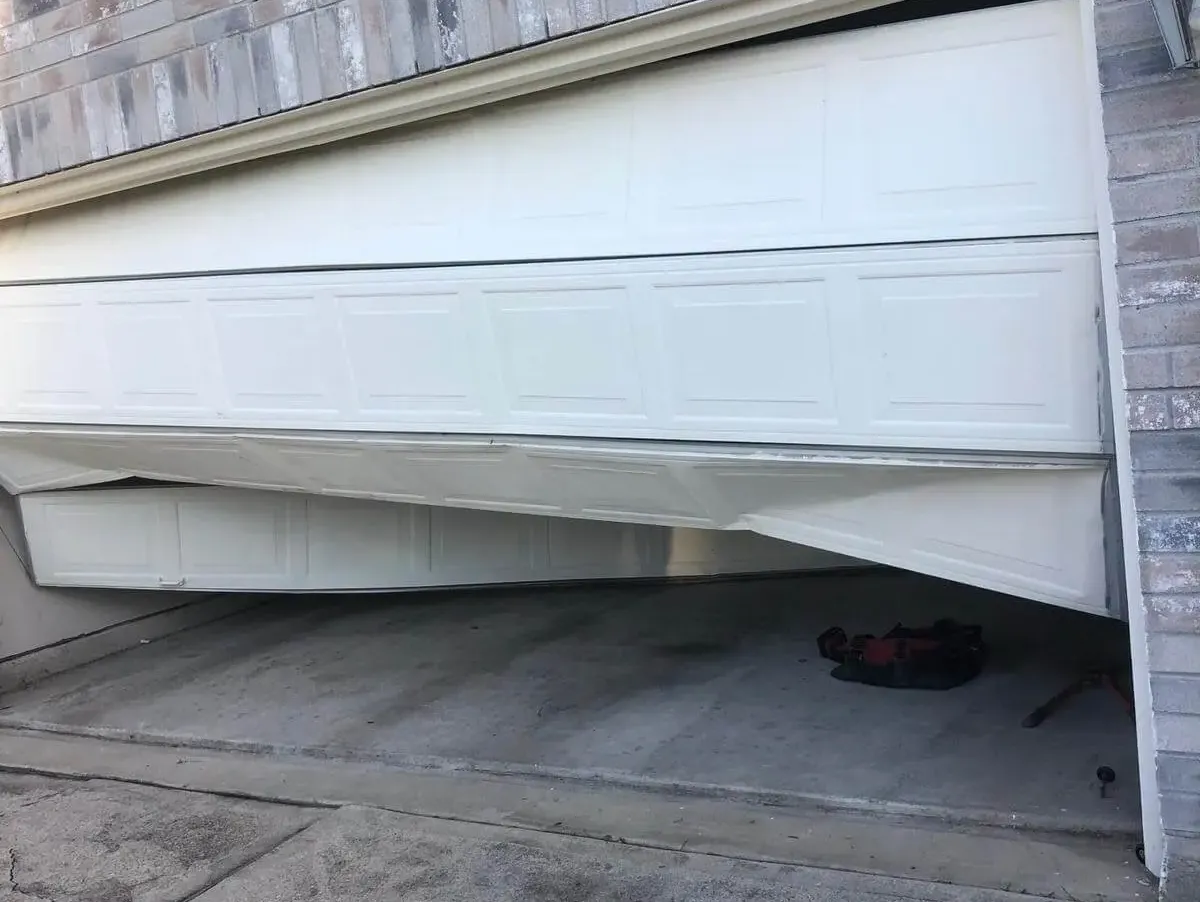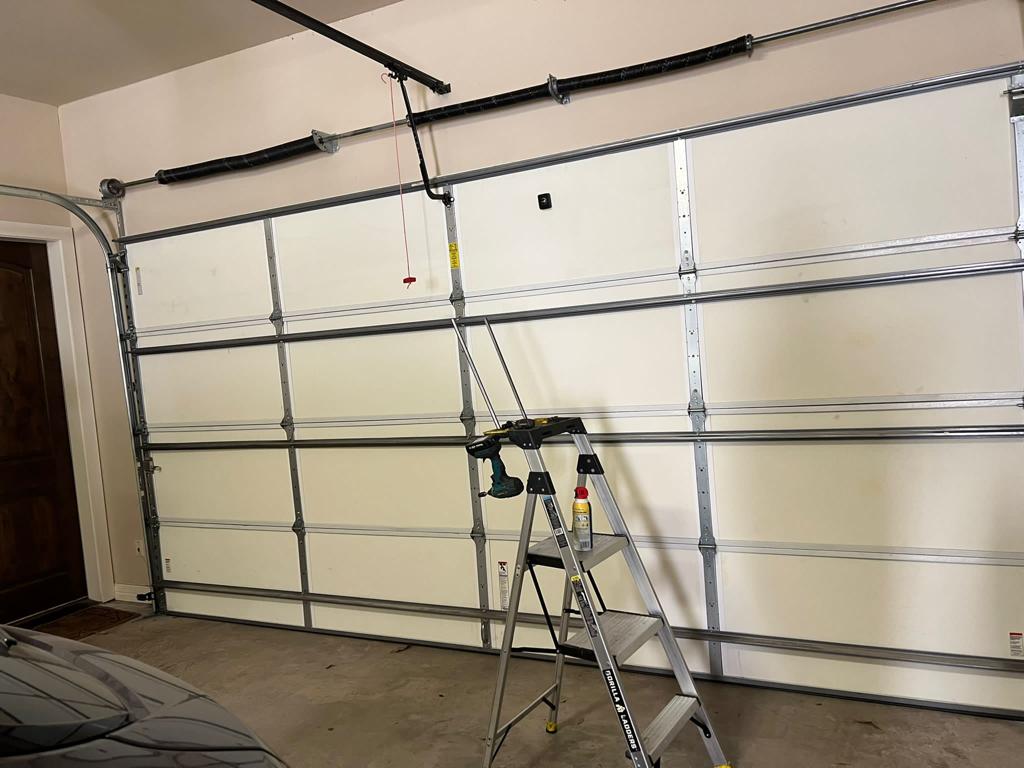How To Fix A Dented Garage Door
How you can easily fix any dented garage door.
Dented garage doors are a common issue that can occur due to various reasons, such as accidental impacts, harsh weather conditions, or general wear and tear. While a dent might seem like a minor cosmetic problem, it's important to address it promptly. Even small dents can affect the functionality, security, and overall appearance of your garage door, potentially leading to more serious issues if left untreated.
Fixing a dented garage door not only restores its aesthetic appeal but also ensures that it continues to operate smoothly and securely. Different types of garage doors, including those made from steel, aluminum, wood, and composite materials, can often be repaired using various methods. However, the approach to fixing the dent may vary depending on the material and the severity of the damage. In some cases, professional help may be necessary to ensure a proper and lasting repair, especially for larger or more complex dents.
Understanding the Damage
Assessing the Dent
Before attempting any repairs, it’s essential to assess the severity of the dent in your garage door. Here’s how you can determine the extent of the damage:
- Size and Depth: Examine the size and depth of the dent. Small, shallow dents are typically easier to fix, while larger, deeper dents may require more effort or professional intervention.
- Location of the Dent: The location of the dent on the garage door can also impact its operation. Dents near the edges, tracks, or where the door meets the frame can affect the door’s ability to open and close smoothly. If the dent is causing the door to jam or operate unevenly, immediate attention is needed.
- Impact on Functionality: Check if the dent is interfering with the door’s movement. Open and close the door to see if it operates smoothly or if the dent is causing any misalignment or unusual noises. A dent that affects the door’s function may require professional repair to prevent further damage.
Types of Garage Door Materials
The material of your garage door plays a crucial role in determining the appropriate repair method. Different materials respond differently to repair techniques:
- Steel Garage Doors: Steel is one of the most common materials for garage doors due to its durability and strength. Small dents in steel doors can often be repaired using DIY methods like the plunger or hot water method. However, larger dents may require specialized tools or professional help to ensure the door’s structural integrity is maintained.
- Aluminum Garage Doors: Aluminum doors are lightweight and resistant to rust, but they are more prone to dents than steel. The good news is that aluminum is relatively easy to repair. Minor dents can often be popped out using simple methods like hot water or compressed air. However, because aluminum is softer, care must be taken not to damage the door further during the repair process.
- Wood Garage Doors: Wood doors are valued for their natural beauty and customizability, but they can be more challenging to repair. Dents in wood can sometimes be filled with wood filler and sanded down, but deep dents may require replacing the damaged section. Wood doors are also more susceptible to warping if not properly maintained.
- Composite Garage Doors: Composite doors combine the benefits of wood and synthetic materials, making them durable and resistant to weather. Dents in composite doors can often be fixed using similar methods as wood, but care must be taken to match the finish and texture during repairs.
Understanding the material of your garage door and the severity of the dent will help you choose the most effective repair method, ensuring your door remains functional and looks its best.
DIY Methods for Fixing Dents
Hot Water Method
Best for: Small, shallow dents on metal doors.
Step-by-Step Guide:
- Boil Water: Start by boiling a pot of water.
- Pour Hot Water on the Dent: Carefully pour the hot water over the dented area of the metal garage door. The heat will cause the metal to expand, making it more pliable.
- Push the Dent from the Inside: While the metal is still warm, reach behind the dent (if possible) and push it out using your hands or a blunt object. Be cautious to avoid burning yourself.
- Cool Down the Area: If the dent pops out, quickly cool the area with a cold water hose or a wet cloth. The rapid cooling will help the metal to contract and set in place.
Plunger Method
Best for: Small, shallow dents on metal or aluminum doors.
Step-by-Step Guide:
- Clean the Area: Clean the dented area and the plunger with warm soapy water to create a good seal.
- Apply the Plunger: Place the plunger directly over the dent, ensuring it forms a tight seal around the dented area.
- Push and Pull: Press the plunger firmly against the door and then pull back with even force. The suction should help pop the dent out.
- Repeat if Necessary: You may need to repeat this process a few times to fully remove the dent.
Aluminum Foil, Lighter, and Compressed Air Method
Best for: Small to medium-sized dents in metal doors.
Step-by-Step Guide:
- Prepare the Materials: You’ll need a piece of aluminum foil, a lighter or heat source, and a can of compressed air.
- Cover the Dent with Aluminum Foil: Cut a piece of aluminum foil slightly larger than the dent and hold it over the dented area.
- Heat the Foil: Use the lighter to heat the aluminum foil for about 30 seconds. The heat will transfer to the metal, expanding it.
- Remove the Foil and Apply Compressed Air: Quickly remove the foil and immediately spray the dent with compressed air. Hold the can upside down to spray cold air onto the heated area.
- Wait for the Dent to Pop Out: The rapid cooling from the compressed air will cause the metal to contract, potentially popping the dent back into place.
Rubber Mallet and Wood Block Method
Best for: Larger dents where other methods may not work.
Step-by-Step Guide:
- Access the Inside of the Door: Open the garage door and locate the dent from the inside.
- Place the Wood Block: Position a piece of wood (preferably softwood) against the dent on the inside of the door. The wood block will help distribute the force evenly and prevent further damage to the door.
- Gently Tap with a Rubber Mallet: Using a rubber mallet, gently tap the wood block to push the dent out from the inside. Start with light taps and gradually increase the force if necessary.
- Check Progress Frequently: Stop periodically to check the progress from the outside of the door. Continue tapping until the dent is minimized or removed.
- Smooth Out the Surface: If the dent is mostly removed but the surface is uneven, you can use a soft cloth and gently press to smooth it out.
These DIY methods provide practical solutions for fixing small to medium dents in your garage door, depending on the material and severity of the damage. For larger or more stubborn dents, or if you're unsure about attempting the repair yourself, consider contacting a professional for assistance.





